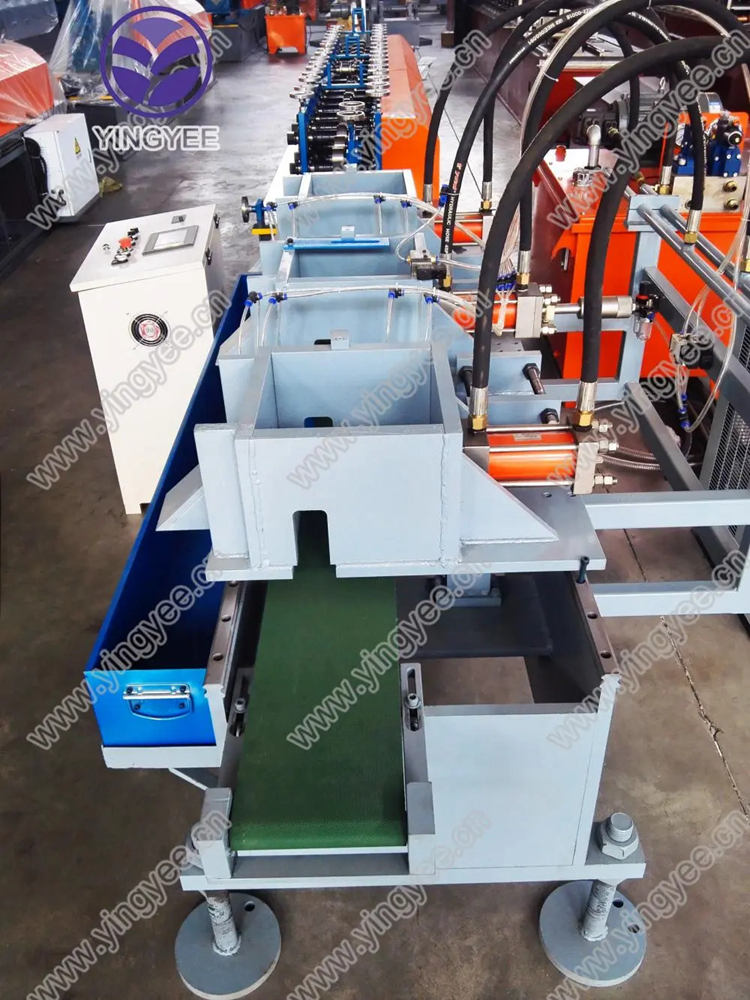
Understanding Stud and Track Keel Roll Forming
Roll forming is a continuous bending operation that progressively shapes a long strip of metal into a desired cross-section. One of the specialized applications of roll forming is the creation of stud and track systems, which are essential components in the construction and manufacturing industries. These systems are critical for the framing of walls, ceilings, and other structural elements, offering strength, lightweight characteristics, and ease of installation.
What are Studs and Tracks?
In construction, studs refer to vertical framing members typically made from metal or wood, while tracks are the horizontal components that secure the studs in place. Together, they form the framework of interior partitions, allowing for the efficient installation of drywall and insulation. Metal stud and track systems have become increasingly popular due to their durability, resistance to fire, and overall cost-effectiveness.
The Roll Forming Process
The roll forming process for studs and tracks involves several key steps. First, a continuous metal strip is fed through a series of rollers that gradually shape it. Each set of rollers performs a specific function, such as creating flanges, web shapes, and other geometrical features. The precision of this process allows for consistent quality and dimensional accuracy, which are crucial for structural applications.
Typically, the process begins with the selection of high-quality cold-rolled steel, which is known for its excellent formability and strength. The metal is then cut to length and passed through a sequence of rollers that progressively form it into the desired profile. Each roll station is specifically designed to impart a unique shape or feature to the metal, and by adjusting the rollers, manufacturers can create various stud and track configurations based on project requirements.
Benefits of Roll Forming Studs and Tracks
1. Efficiency Roll forming is a continuous process, allowing for high production speeds. This results in lower labor costs and quicker turnaround times on projects.
2. Material Utilization The process minimizes waste material. Since roll forming utilizes a continuous strip of metal, it reduces scrap compared to other methods like punching or cutting.

3. Consistency The controlled process ensures uniformity in dimensions and quality. The use of CNC (Computer Numerical Control) technology allows for precise adjustments in real-time, leading to high-quality outcomes.
4. Versatility Stud and track systems can be designed to meet specific structural requirements. Custom designs can accommodate various building codes and standards, making roll forming an adaptable solution.
5. Lightweight Structure Metal studs are lighter than their wooden counterparts, making them easier to handle and transport. This contributes to overall project efficiency, particularly in large-scale constructions.
6. Resistance to Various Factors Metal studs resist warping, shrinking, or swelling due to humidity or temperature changes, unlike wood. They also provide excellent fire resistance, adding an element of safety to structures.
Applications of Stud and Track Systems
Stud and track systems are used extensively in both residential and commercial buildings. They are ideal for creating non-load-bearing walls, interior partitions, and ceilings in offices, hospitals, and schools. The lightweight nature of metal studs allows for easy modifications during renovations or expansions, making them a favored choice among architects and builders.
Additionally, these systems are utilized in the manufacturing of modular buildings, where quick assembly and disassembly are crucial. The roll-formed studs and tracks can be easily transported and erected, making them suitable for on-site construction.
Conclusion
Stud and track keel roll forming presents a vital solution in modern construction. More than just framing elements, these systems embody efficiency, strength, and adaptability that industry professionals seek. As the demand for sustainable and efficient building practices continues to grow, the role of roll-formed stud and track systems will undoubtedly expand, shaping the future of construction and interior design. By understanding the benefits and applications of this technology, stakeholders can make informed decisions that enhance both the quality and sustainability of their projects.